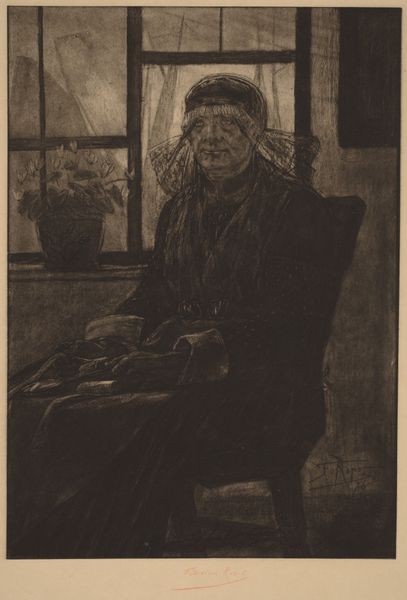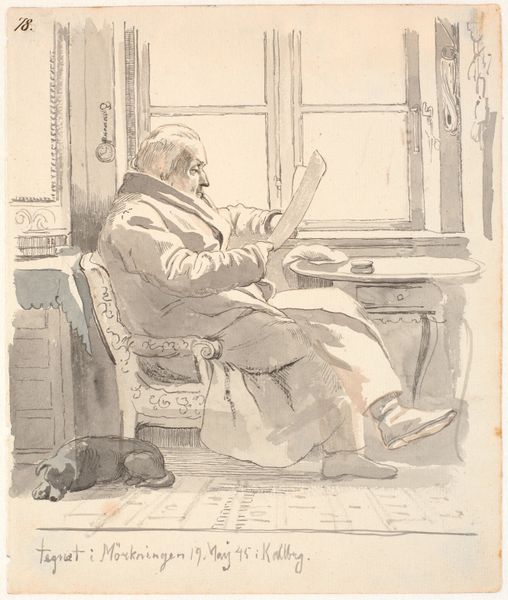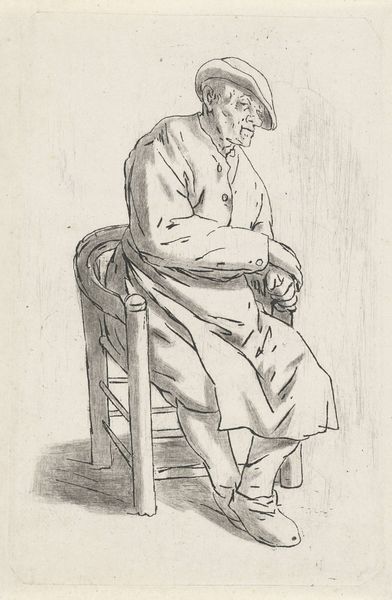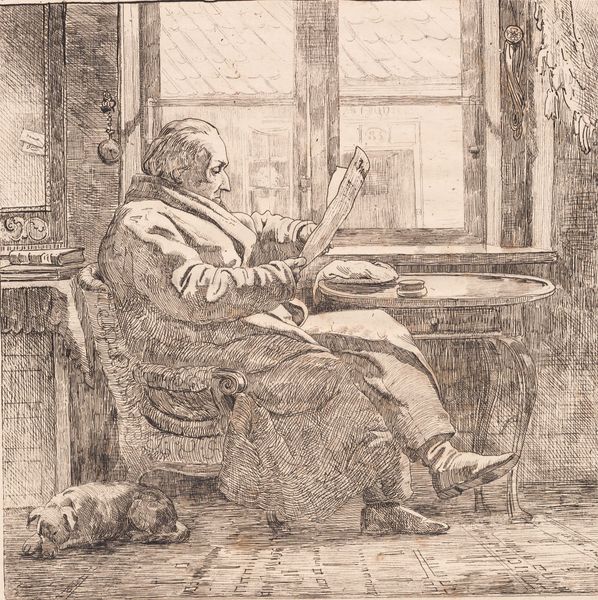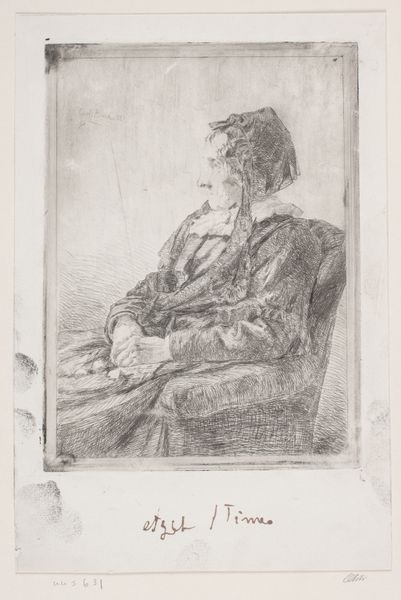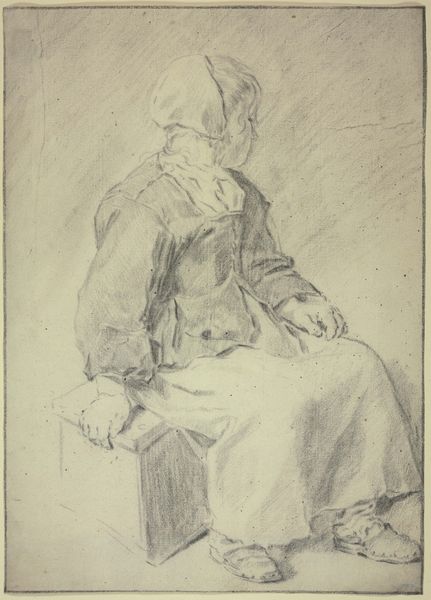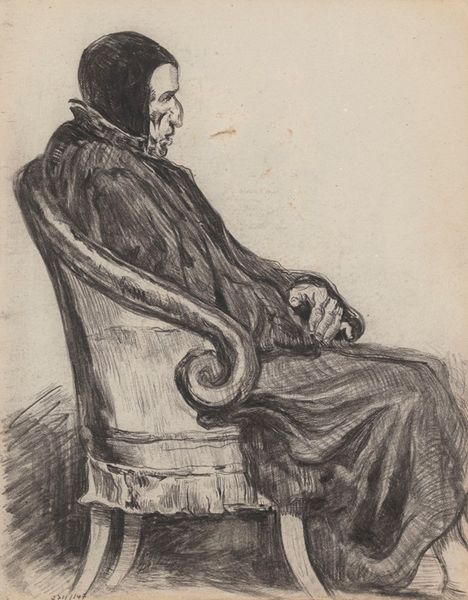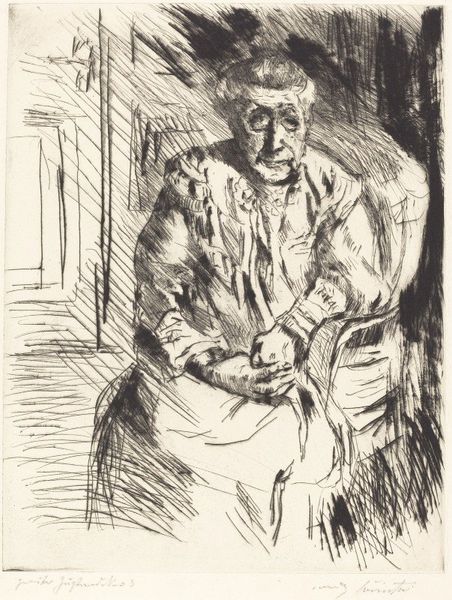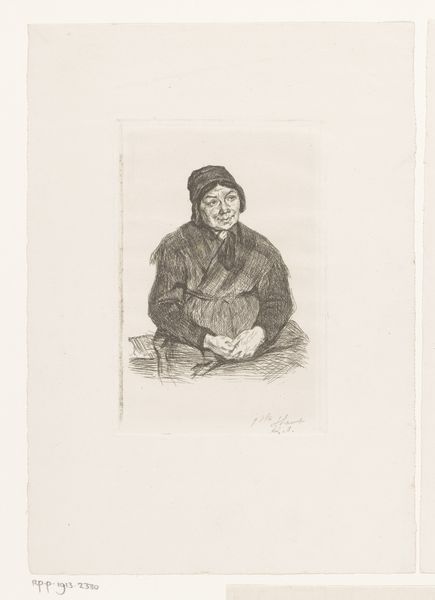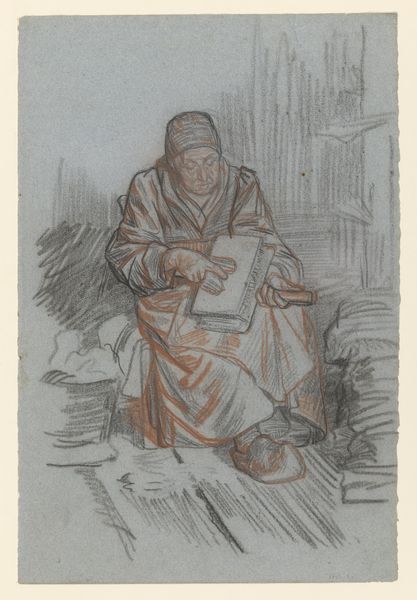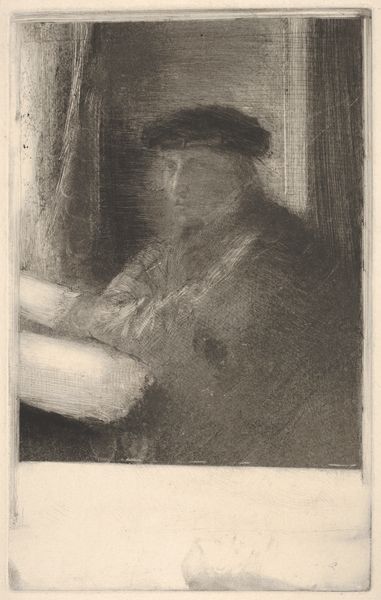
drawing, print, charcoal
#
drawing
# print
#
charcoal drawing
#
coloured pencil
#
charcoal
#
realism
Dimensions: Sheet: 15 3/4 × 11 5/8 in. (40 × 29.5 cm)
Copyright: Public Domain
Curator: Looking at this drawing, one can immediately feel the intense concentration of the figure, bent over her work, every line communicating focus. Editor: Yes, there’s something really compelling about that intensity, isn't there? But also, a feeling of confinement, a certain constriction around the mouth and jaw. There's a somber atmosphere surrounding this woman. Curator: Indeed. This is "The Lace-Maker", created around 1876 by Felicien Rops. It's currently part of the collection at the Metropolitan Museum of Art. The piece primarily uses charcoal and perhaps colored pencil. We see this figure rendered with great attention to detail. Editor: You know, I find myself thinking about the socioeconomic implications of her work. The labor involved in creating lace… the countless hours she must pour into such delicate work just to make a living, always on the margins, one more forgotten woman erased through labour. Curator: Certainly. There's a definite weight of labor communicated here. What do you make of the way the domestic interior is depicted? There’s a strong contrast there in terms of class and comfort with those who can buy the finished product she's working on Editor: It frames her, doesn't it? That small window… it feels almost like a symbol of limited opportunities, of being trapped by her circumstances. This realism feels brutal, not romanticized. Curator: It's worth noting that Rops was a keen observer of the social realities of his time, especially regarding class and gender roles. The way he portrays women challenges the saccharine depictions common in his era, which makes the reading feel deliberate and, at times, rather challenging to the viewer. Editor: Absolutely. This piece makes visible the exploitation inherent in such craft, of the commodification of women's labor, of those unseen and unacknowledged people toiling in obscurity, robbed of their time and opportunities. Rops holds up a mirror. Curator: The raw energy conveyed through charcoal allows Rops to lay bare those very difficult questions surrounding gendered labor. Editor: To view this not merely as a portrait but a testament to those realities transforms it from a charming image of artisanal labour to a haunting representation of oppression and resilience. Curator: Precisely. It serves as a vital reminder of the critical eye we must apply when engaging with art. Editor: Art can force us to ask questions. To consider narratives outside the accepted versions of history. That’s its role.
Comments
No comments
Be the first to comment and join the conversation on the ultimate creative platform.
